

QUODITCH EDUCATION DEVON
|
Trees can grow in a very untidy fashion if left to their own devices. They can be too crowded to grow with just one trunk. Instead they push up lots of weak shoots all competing for the light. This also has the effect of taking all the light away from the plants and grasses growing underneath, eventually killing them off. The trick is to "coppice" them. To take away the weak growth and allow some light back into the forest floor. Also any diseased growth is cut away before it can spread throughout the whole tree. |
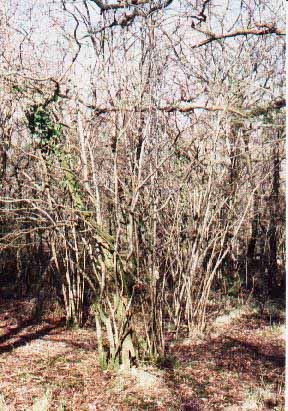
|
|
|
Our friend Tim Barrett very kindly came down from his nature reserve in Bedfordshire to teach us how to do it. Firstly he snips away the smaller twigs from the outside, so that he can get to the larger branches more easily. |
|
|
Then he saws away some of the medium size branches. Often, he will trim them at about a foot up before cutting them again just above ground level. This is so that when the branch falls it does not rip the wood near the final cutting place. It is important to have a clean, smooth surface to repel water. |
|
Next, the larger, inner branches are removed. Then all the stumps are trimmed to just above ground level. |
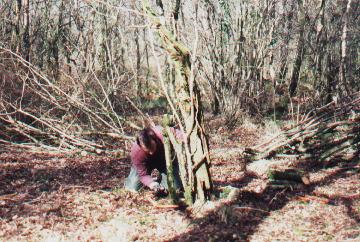
|
|
|
The aim is to end up with a "stool", with all the branches cut just above ground level. Their tops slope outwards to allow the rain water to drain away. The idea is that fresh shoots will grow around the outside of the stool. Gradually the tree will spread outwards. It can last much longer by this method of regeneration than if left to grow normally. |
|
But it's not as easy as that. We have predators at Quoditch. The deer would soon nibble away the delicious, newly growing, fresh shoots. So we have to protect the trees. |
|
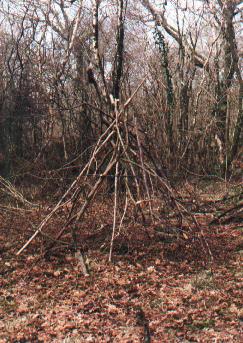
|
One way is to build a cover out of the branches we have cut off. This year, Tim is experimenting to see if this will be enough. If the deer still succeed, then, when we next coppice some trees, we will have to try a different strategy to keep them away. |
|
The end result is a series of wigwams. It looks as if the children have been playing Cowboys and Indians. We will need to keep an eye on the new growth to ensure that it is not attacked.
|
|
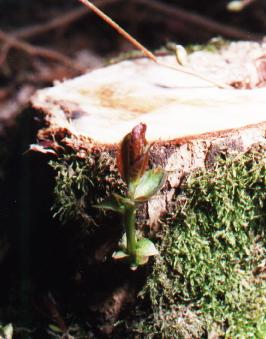
|
By the middle of April new shoots are beginning to appear. So far, our anti deer protection seems to have worked. |
|
|
|
|
Most trees can be coppiced. But certain trees are treated in this way because they can be useful to man. Hazels are coppiced so that they produce a consistently thick branch that can be used for making woven (wattle) hurdle fences. Generally hazels are cut back about every ten years or so. This causes the stool to spread out and produces a standard thickness of branch. |
|
Willows are coppiced so that the newly formed thin branches can be used to make baskets. Usually willows are cut several feet above ground level. This is known as "Pollarding". You can still see pollarded crack willows if you travel through the Somerset levels just north-east of Taunton.
|
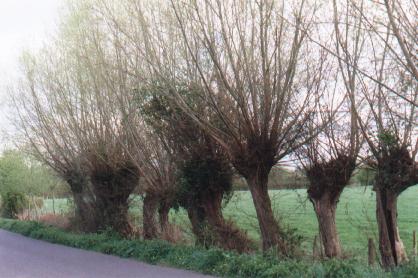
|
|
|
|
Other land management pages
Management of thistles
What happens to dangerous
trees
Return to main management
page
Return to HOMEPAGE
This page was last updated on January 5th. 2005